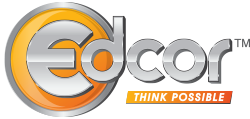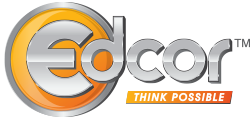Diversity and Inclusion was a hot topic of discussion last year following a global uproar against systemic racism and social injustice. In response, many organizations changed their logos, messaging, and PR strategy to showcase their support and culture of inclusiveness. Many others responded with sensitization training and workshops. As a result, people talked more positively about companies that supported Diversity according to LinkedIn. However, the news lived its natural course and soon fizzled. As is the case with many other issues, people got tone-deaf or desensitized here too. This is precisely why it’s important to have a continuous dialogue about Diversity and Inclusion. Nations, organizations, social cohorts, even families are becoming a melting pot of diverse cultures. Therefore, the point couldn’t be closer to home: Diversity is a part of our social fabric and Inclusion is a vital need.
So, how can a Diversity and Inclusion culture improve your workplace and business?
A diverse workforce is a symphony of myriad backgrounds, cultures, strengths, and experiences. Consequently, Diverse workforces are far more creative, innovative, agile, and responsive leading to huge competitive advantages for businesses.
Let’s explore the term definitions before a deep dive into the topic.
Diversity is embracing people of all ethnic backgrounds, ages, genders, races, sexual orientations, and learning abilities (neurodiversity) in a workplace.
Equity is meting equal treatment to all – devoid of any harassment, discrimination, or biases.
Inclusion is valuing their uniqueness and making them feel like important cogs of the organization.
Why is Inclusion important?
It’s important to understand that Diversity and Inclusion are separate and complementary concepts that yield power to a business when synergized. Merit-based unbiased recruitment is the first step towards diversity, however, organizational efforts should not limit to hiring talents from diverse groups. The journey of your diverse talent pool throughout the employee lifecycle – how you nurture them, celebrate their uniqueness, and provide equal advancement opportunities – is a measure of your Diversity and Inclusion strategy. Inclusion is the key.
An in-depth study by Deloitte has shown that in organizations where employees feel valued and included, there was a
- 83% uplift in responsiveness to changing customer needs,
- 42% increase in team collaboration, and
- 31% uplift in team performance
Fairness, Respect, Value, and Belonging are pegged as key indicators of Inclusion that build confidence and drive high performance. Unsurprisingly, most Fortune-500 companies today either have a Diversity and Inclusion culture or want to promote one. Fundamentally, it’s an organization-wide sentiment that is not limited to HR. However, HR teams are the key players in promoting it.
Top-5 ways to promote Diversity and Inclusion
1. The Top-down Approach
Irrespective of your organizational structure, the leadership buy-in, messaging, and behaviors are key to making the Diversity and Inclusion culture a success. Firstly, be committed to constant change, new ideas, and dynamics within your teams. Secondly, keep welcoming diverse voices and viewpoints to the table for a sustained multi-directional growth trajectory. Lastly, make it a continuous process – not a one-time promotion – to keep the well-intentioned strategies going. To this end, Unconscious Bias training for Senior management, and periodic evaluations of ‘Professional development offerings’ for Managers have proved useful for Merck & Co to reemphasize the culture of Inclusiveness.
2. Flexible Mandatory Holidays and Celebrating Culture Days
The easiest and probably one of the most effective ways to promote a sense of inclusiveness is to celebrate the differences and reflect them in the policies. Having Flexible Mandatory Holidays is one such example. Out of the number of days assigned as company holidays, one or two can be flexible and taken by employees based on their ethnic and cultural adherences. Another related practice is holding regular ‘Culture’ days, where an employee speaks about unique aspects of their culture. Certainly, knowing each other dissolves barriers, and dissipates myths. Be creative, encourage everyone to be open-minded, and indulge in a positive dialogue. Depending on the size of the company, Culture days can be online or offline, within teams, or involving the whole organization.
3. Effective and Inclusive Meetings
The biggest factor contributing to an experience of inclusiveness or a lack of it is through ‘co-worker interactions’. The HQ efforts can fall flat if the culture has not percolated to each stream of the workforce. A primary way in which these day-to-day interactions happen is via meetings. Here are some simple strategies for holding effective and inclusive meetings:
- Being conscious of the communications style – use gender-neutral pronouns; use we/us/ours; avoid ‘mansplaining’; ask open-ended questions, and encourage participation.
- Giving credit where it’s due – give credit to the original proponent of the idea, irrespective of their level.
- Scheduling meetings based on time zones – show consideration towards people in different time zones and work schedules.
- Circulating agendas and questions in advance – accommodate participants with neurodiversity, introvertedness, or for whom English is a second language so that they can process the information and prepare a response.
- Encouraging voices from all corners – bring to the fore the faint voices that tend to be overpowered. Foster an environment where ideas from everyone are encouraged.
4. Building a Leadership Pipeline from Within
Your leaders need to have the same values as your organization. So, Diversity and Inclusion can be ingrained deeper in the fabric of an organization by building a leadership pipeline within the organization by promoting individuals who have embodied the culture of the organization. Also, the practice ensures that there’s equitable and diverse representation in the leadership. For this, continuing education and upskilling the managerial workforce are vital tools. Edcor has 200+ preferred school-network partners who offer discounts for advanced management degrees, which can help you build a leadership pipeline.
5. Specialized HR Benefits
Specialized HR benefits like Educational Assistance Programs including Tuition Reimbursement, Student Loan Repayments, and Scholarship Administration are strategic HR tools that can foster a sense of inclusiveness within the workforce. Commitment to your employee’s career advancement and financial well-being shows that you care for them as an organization. These benefits are pegged high by parts of the workforce who couldn’t finish school, and by those in jobs that require high-level degrees. The way we look at it: it’s a win-win.
Edcor can help with this part of your Diversity and Inclusion strategy
Recently an esteemed school partner awarded 7 scholarships to Edcor client-employees for its Diversity and Inclusion program. We were happy to be vectors of dissemination.

Edcor is a woman-owned business and is the benchmark in education benefits administration. For 40 years, our customized service and solutions have allowed Fortune 1000 Clients to use education benefits programs for employee recruiting, retention, and development. Please feel free to reach out to us!
Spardha Khera, Edcor



